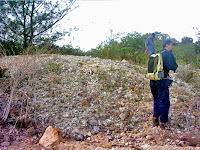The forum was sponsored by the Pre-Columbian Research Center ( www.anticip.com.ar ) and coordination related to it were made by Odlanyer Hernández de Lara ( Archaeological Cuba - Cuba ) and Coceres Claudia María ( Culture Latino - Argentina ).
We wanted to convey to those interested in knowing about this event, have not had the opportunity to participate in it for certain reasons, the closing report, which was disseminated via email and the website itself Archaeological Cuba .
Dear participants of the First Virtual Forum of Archaeology and Heritage:
First of all, we want to thank everyone for their participation in this initiative that has sought to virtual as a first step to establish communication links among specialists, students and those interested in Latin American heritage and archeology.
this in mind, I think it was a good opportunity to raise awareness of the problems we suffer as a region, based on national experiences. Although it has not been enough time and many things have been outstanding, has also to recognize the interaction and the desire of bringing the knowledge created in different areas of the communities towards the protection of our heritage.
have been many difficulties and obstacles in this short journey, but we ephemeral aware that this effort may take a higher flight in coming years, as Latin American initiative. Joint participation in the organization and development of future Virtual Forum will be an achievement in itself, able to understand in greater depth the topics to be discussed and guidelines to follow.
This is officially closed this First Virtual Forum of Archaeology and Heritage. Cultural Heritage in Latin America . Yours sincerely The
:
Odlanyer Hernández de Lara and Coordinators
Coceres Claudia María
PS .- .- In the following days will be sent participation certificates to all registrants. For any matter can contact us through email; forocirtual2009@cubaarqueologica.org. Google Group will be disqualified from sending messages will only be available for consultation. As for the editing of papers and comments, will be notified promptly, although the publication is available on the website Cuba Archaeological ( www.cubaarqueologica.org )
See you soon!
This work is under a Creative Commons license .
email: aguilasdeanaga@gmail.com






